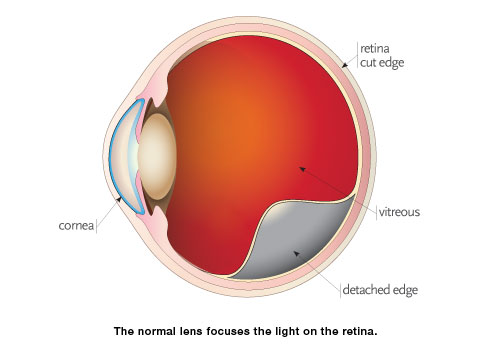

The American Society of Retina Specialists says 9 in 10 cases of retinal detachment repairs are successful. Now, doctors can repair almost all retinal detachment issues, and that is true even if the problem happens more than once. Ophthalmologists have tools that their forbearers didn’t dream of. Modern eye surgeries are incredibly sophisticated. Touching them in the wrong way means harming them. The retina and other eye tissues are small, delicate, and sensitive. Doctors considered surgery a last-ditch effort to return vision, and it rarely worked.Įye surgeons had to use large, handheld tools to help their patients in the 1910s and 1920s, and they didn’t have lasers and specialized visualization tools to help them scope out problems. In a review published in the Scientific Journal of Medical and Vision Research, writers point out that 1 person in 1,000 with retinal detachment kept their vision in 1912. Medical technology wasn’t capable of providing a cure. But years ago, people who had this issue rarely kept their vision. People have struggled with this medical issue for decades. But they rarely cause physical pain in the eyes or the head. According to Mayo Clinic, retinal detachments can be scary and cause panic. There is one symptom you might expect but will not feel: pain. You will have trouble focusing on objects, even if you squint. Typically, you will lose your peripheral vision first. Something that looks like a shadow or a curtain will drop over your view. You will see bright spots of color across your visual field. If you try to focus on them, they float away. Dark specks move through your field of vision.

Most retinal detachment symptoms involve your vision. Lose enough of them, and you will also lose the ability to see. Whenever the retina is pulled away, cells start to die. But they all include some kind of separation or movement of retinal tissue away from nourishment. Some involve pressure or a blow to the head, and others are sparked by disease or illness. The movement pulls the retina away from nourishment.Īll these types have different causes. Tractional: This is caused by retinal scars that contract.This is the most common type of detachment. Rhegmatogenous: The retina tears or breaks, and that allows fluid to slide beneath.The retina does not tear, but fluids leak between the retina, interrupting connection with blood flow. Exudative: This form is often caused by disease or injury.The National Eye Institute says there are three different types. If that is breached, it’s a retinal detachment. To stay functional, the retina needs constant contact with blood flow.

This thin piece of tissue translates light into electrical impulses, and it’s responsible for your ability to see. Think of your retina as the core of your eye. You may not be able to prevent all the risks from hitting you, but there are some things you can do to keep your eyes safer. Those improvements are critical, as some retinal detachment risk factors - including myopia - are on the rise. In 9 out of 10 times, they can completely restore vision. Now, surgeons have several different types of techniques they can lean on to fix a retinal detachment. Surgeons tried to correct the problem, but they just didn’t have the tools or the technology to do so. In the past, retinal detachments almost always meant blindness. That is retinal detachment, and it’s a medical emergency. If the retina tears or buckles, it loses contact with nourishing blood flow.


 0 kommentar(er)
0 kommentar(er)
